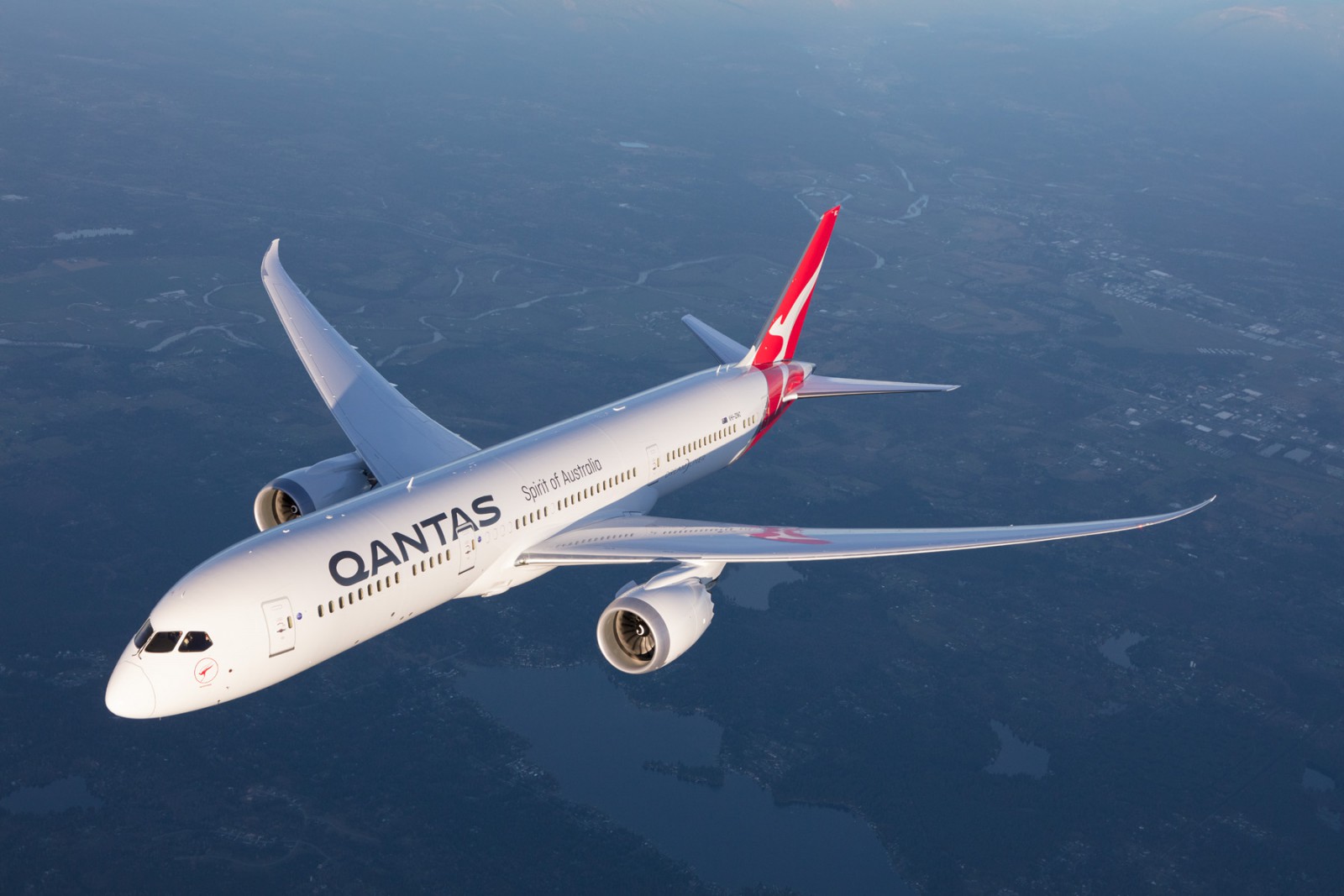Qantas boss Alan Joyce says the airline has no plans to join partner American Airlines and rival Virgin Australia by adding extra legroom seats in its international economy cabins.
The airline is about to start a series of high-profile test flights to collect information on the impact of ultra-long-haul test flights on crew and passengers ahead of its proposed Project Sunrise to launch non-stop flights between eastern Australia and London and New York.
But it appears that it is unlikely to include extra legroom options such as American’s Main Cabin Extra or Virgin’s Economy X.
READ: We do our widest ever test of American Airlines economy.
These are economy seats that allow people to pay a fee for a few inches of extra legroom as well as limited perks such as priority boarding and easier access to overhead locker space.
They cost significantly less than premium economy — Virgin charges an additional $A199 on Sydney-Los Angeles — but offer less seat pitch without advantages such as wider seats, better food and nicer wine.
Qantas added an extra inch of legroom to its B787 economy seat pitch for its ultra-long-haul Perth-London flights but offers are no extra legroom options other than the exit rows, for which it charges extra.
Joyce said the airline was not sure that the extra legroom seats were needed on international flights because the airline operated four classes, including premium economy “which is in that space”.
However, he said Qantas could look at the possibility when it renewed in the domestic fleet, particularly if Boeing proceeds with the New Midsize Airplane (NMA), dubbed the 797 by the media.
READ: Leading Analyst predicts Boeing will launch the 797
He said that could be something the airline could work on in the future, but it would “more on our short-haul operations given that we’ve invested very heavily in premium economy.
“We think that’s the class we want people to buy up to,” he said.
The first Project Sunrise test is due to take off in the next week or so and involves ferrying a newly delivered Boeing 787 from Seattle to New York and then flying directly from New York to Sydney with a limited number of people on board.
That will be followed sometime in mid-November with a similar flight from London and then in December with another flight from New York.
Joyce, who is acutely aware of the publicity value of the flights and predicted media coverage would be “massive”, intends to go on two of the flights.
“I think it’s very important that you demonstrate that you’re willing to do it,’’ he said.
The airline has been through the best and final offer process with both aircraft manufacturers for Project Sunrise and both are confident they can provide an aircraft capable of performing the mission.
Boeing is offering a version of its Boeing 777-9 with a reduced payload while Airbus has pitched its A350-1000.
READ: Boeing to offer Qantas special 777-9s for its project sunrise
However, a cloud continues to obscure Sunrise as Qantas attempts to get a new enterprise agreement with its pilot union.
Joyce reiterated his comments at the International Air Transport Association annual meeting in June that he was prepared to ax the project if Qantas could not get flexibility from its pilots and approval from regulators to change the EBA.
He said this was why the airline was working with Australia’s Civil Aviation Safety Authority on fatigue risk management and other issues to “confirm that this can be done and it can be done in a very safe way”.
“The pilot process shouldn’t take months or years,’’ He said. “As I think I’ve said before, it’s not Brexit.”
Joyce said the airline was working with the pilots but Qantas would be hard-nosed on the issue.
“We’re having good dialogue with them and we hope to get through that and get there,’’ he said.
“But we can’t put in an order for an aircraft unless we know the business case is going to meet the thresholds and if the business case doesn’t meet the thresholds, we won’t be ordering.
“That’s why Qantas is in the great position it’s in today: it’s got discipline in capital allocation, it’s got discipline in making sure we get a return on investment capital and if we don’t, we don’t just do (projects).
Asked if there was a cut-off date, The Qantas boss said he wanted to have a position with the pilots by the end of the calendar year.
He said the carrier was looking for productivity gains similar to those it got for its Boeing 787s, which operate non-stop between Perth and London.
This related to how the aircraft could be operated, a process called “night credits” and the flexibility to move staff around aircraft without huge training costs, he added.
The tests over the next three months will include equipment for monitoring the brainwaves of pilots.
























